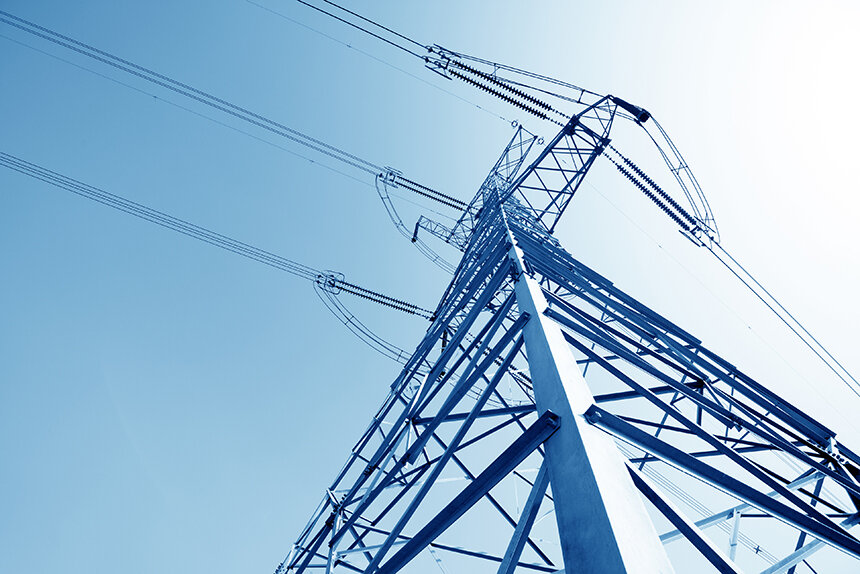Second Revolution Wind Project Rejected by Rhode Island Energy
Utility says higher interest rates, increased costs of capital, and supply chain expenses made project unattractive
July 24, 2023
PROVIDENCE — It’s been a rough-and-tumble summer for offshore wind projects in Rhode Island, as well as for the state’s efforts to reach renewable energy goals.
Both hit a stumbling block last week when Rhode Island Energy announced it was rejecting a joint bid from offshore wind developers Ørsted and Eversource, citing “high proposed contract costs” that were deemed too expensive for the utility company’s customers.
While the utility declined to go into more specifics pending a future filing with the state Public Utilities Commission, it indicated in its announcement that higher interest rates, increased costs of capital, supply chain expenses, and uncertainty over federal tax credits made the project unattractive for the state’s ratepayers.
The joint proposal was also the only bid received by Rhode Island Energy for the offshore wind procurement it issued in October 2022. The original bid, issued at the behest of state officials and lawmakers, sought to solicit between 600 and 1,000 additional megawatts (MW) for the state’s renewable energy portfolio. Avangrid, who owns a controlling interest in most of the other leases just south of Martha’s Vineyard, did not submit a bid.
In a statement, Rhode Island Energy president David Bonenberger said his company was already in talks with state officials to bring more offshore wind to the state.
“We recognize some will be disappointed that we didn’t choose to move forward on negotiating this purchase power agreement,” Bonenberger said. “But that doesn’t mean we’re abandoning our commitment to offshore wind in Rhode Island.”
The rejected bid would have been the second major offshore wind project collaboration between Ørsted and Eversource. Named Revolution Wind 2, the project as proposed would have generated 884 MW of renewable energy, enough to power more than half a million Rhode Island homes, according to the project’s website.
Ørsted and Eversource’s first collaborative project, Revolution Wind, received final approval from regulators at the Coastal Resources Management Council earlier this year, and the federal Bureau of Ocean Energy Management released its final environmental analysis for the project last week. Final federal approval is expected later this year.
That project, expected to become operational in 2025 and provide 400 MW of wind power to Rhode Island, was the beneficiary of a previous RFP for renewable energy issued by previous utility owner National Grid.
Ørsted spokesperson Meaghan Wims said the company was “disappointed” with Rhode Island Energy’s decision and was assessing its options for the Revolution Wind 2 project.
“This project would put Rhode Island’s 100% clean energy future in reach,” said Wims, “delivering renewable energy to hundreds of thousands of homes and creating more than $2 billion in direct economic benefits to the state, with historic investments in local union jobs, workforce training, ports and the supply chain.”
It’s not the first time offshore wind developers in the region have reported higher project costs. In Massachusetts, Commonwealth Wind and SouthCoast Wind indicated in filings to state regulators last fall that their projects may not be as economically viable as they originally thought, and the companies would seek to terminate their already existing power-purchase agreements (PPAs) with utility companies.
The Massachusetts filings led the Rhode Island Public Utilities Commission to order SouthCoast Wind, which at the time was proposing to install an export cable for the project underneath the Sakonnet River and the town of Portsmouth, into a show-cause hearing to explain its reasoning.
At the June 12 hearing, executives from SouthCoast Wind said they decided in May to terminate their contracts, telling regulators that even after paying millions in penalties associated with termination, re-bidding for new contracts next year made more financial sense. The culprit for the project cost increases? Supply chain constraints, inflation, and rising interest rates, according SouthCoast Wind CEO Francis Slingsby.
“The reality for the [offshore wind] industry right now is that almost every developer is seeing that the PPAs and project economics are underwater,” Slingsby told the commissioners at the hearing. “We’re well over 30% cost increase from where we were at executing the PPAs.”
(Commonwealth Magazine reported Avangrid, the developer behind Commonwealth Wind, has agreed to pay $48 million to Massachusetts’ three utility companies to cancel its PPAs. SouthCoast Wind is expected to pay around $60 million to terminate its agreements.)
The increased costs come at a crucial time for the state’s climate goals. Rhode Island has to reduce its greenhouse gas emissions 45% below 1990 levels by 2030, and the new renewable energy standard signed into law last year requires all energy consumed in the state by then to be generated by renewables or offset by credits.
The latest GHG inventory from the state Department of Environmental Management shows the state has reduced its emissions 19.6% below 1990 levels, with electricity consumption accounting for 18.9% of all emissions, the third highest after transportation and home heating emissions.
Despite rapid wind development in recent years, natural gas remains king for electricity generation. According to the latest data available from the Energy Information Administration, natural gas generates 87% of all electricity in Rhode Island.
Renewable energy, including onshore and offshore wind, solar, anaerobic digestion, and hydroelectric, accounts for only 1,000 MW total.
Rhode Island Energy is expected to provide a comprehensive filing explaining its decision to the PUC within the next two months, and Ørsted and Eversource will have a chance to respond.
Categories
Join the Discussion
View CommentsRelated Stories
Your support keeps our reporters on the environmental beat.
Reader support is at the core of our nonprofit news model. Together, we can keep the environment in the headlines.
We use cookies to improve your experience and deliver personalized content. View Cookie Settings



